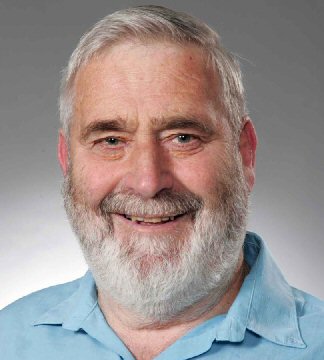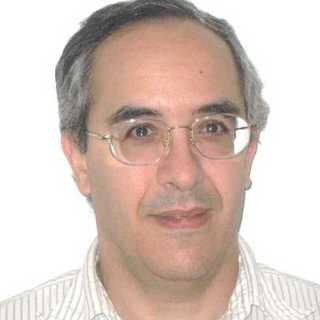The Nobel Foundation’s Retraction of the Rutherford Transmutation Claim
May 19, 2019 — By Steven B. Krivit —
Third in a Series of Articles on the Rutherford Nitrogen-to-Oxygen Transmutation Myth
For more than 70 years, legendary physicist Sir Ernest Rutherford (1871-1937) had been mistakenly credited by most organizations and many scholars for accomplishing the world’s first confirmed artificial transmutation of one element into another. The Nobel Foundation, through its Nobel Prize Web site, was one of the organizations that had credited the discovery to Rutherford rather than the actual discoverer, Patrick Blackett.
I stumbled on this historical discrepancy in 2014 while I was writing my book Lost History. At the time, every Internet reference I found, as well as most print references, said that Rutherford was the one who had performed and reported this experiment.
The misunderstanding goes back many decades. Even some people close to Rutherford were mistaken. In a letter written in 1988, Irish physicist Ernest Thomas Sinton Walton (1903-1995) described his days working in Rutherford’s lab. He spoke about Rutherford’s “two greatest discoveries: the nuclear structure of atoms, and the transmutation of nitrogen into oxygen.”

John Campbell
When I was writing Lost History, I was puzzled. None of the people who had attributed the discovery to Rutherford had cited a journal article or conference presentation in which he had reported such findings or made such a claim. I could not understand the absence of a citation for such a famous discovery.
Campbell (University of Canterbury)
I first contacted John Campbell, a retired physicist from the University of Canterbury, New Zealand, and an expert in Rutherford’s history. He, like everyone else, believed that the discovery belonged to Rutherford.
“It is curious that there was never a Nobel Prize for the world’s first successful alchemist – Rutherford changed nitrogen into oxygen, which was an endeavour that had eluded chemists for centuries,” Campbell wrote.
I asked Campbell where and when Rutherford had published or presented such results. I asked him how Rutherford knew that he had transmuted nitrogen into oxygen and how Rutherford knew that the alpha particle was combining with the nitrogen nucleus, rather than impinging on the nitrogen and knocking off a proton. Although we continued to discuss other aspects of Rutherford history, Campbell never responded to these particular questions. That a Rutherford scholar did not seem to know the answers to such fundamental questions seemed odd, and it piqued my curiosity.
Giunta (Le Moyne College)
Because there were aspects of the early development of atomic science for which I did not have expertise, I had requested an expert to peer-review those chapters in my book as I was developing each one. I contacted Carmen J. Giunta, the chairman of the Department of Chemistry and Physics at Le Moyne College. Giunta is also the editor of the Bulletin for the History of Chemistry and a member of the American Chemical Society’s Division of the History of Chemistry. He graciously agreed to review draft copies of my book chapters as they were ready.

Carmen J. Giunta
I told Giunta about my quandary: “I have read through Rutherford’s four June 1919 papers, I have scanned through his 1920 Bakerian lecture. I find no reference within the five documents that show he realized he had transmuted nitrogen to oxygen. I am very concerned that there may be some kind of urban legend here. I have no facts that Rutherford made a claim of transmutation or concluded that he created oxygen.” I asked Giunta in what paper or conference presentation Rutherford had made this claim.
“Interesting question,” Giunta replied. “My first reaction is that Rutherford did not claim to have transmuted nitrogen to oxygen. Rutherford actually transmuted nitrogen to oxygen in that experiment, but he did not know it at the time.”
The following day, I found the work of two historians — Peter Galison and Milorad Mladjenovic — who knew the correct version of the history. They cited Blackett’s 1925 journal article. Almost everything became clear: it was Blackett who had performed the experiments and obtained the data and published the nitrogen-to-oxygen transmutation claim.
I told Giunta that I had solved the mystery: Blackett had made and published the transmutation discovery. Giunta did not seem to share my enthusiasm. In fact, he appeared reluctant to adjust his opinion. I chose not to argue with him right away. A few months later, I revisited the topic with him. It was clear to me that his opinion was not going to change.
“After all,” Giunta wrote, “Rutherford did artificially transform nitrogen to oxygen, even though he didn’t know it at the time.”
I was stunned. I replied to Giunta, “With all due respect to the legacy of Rutherford, I don’t understand how it makes sense to retroactively attribute any credit to him for something he didn’t hypothesize, didn’t observe, and didn’t publish. Are you sure this is the right thing to do?”
“In my mind,” Giunta wrote, “Rutherford attempted to induce a transformation of elements (albeit by disintegration rather than by synthesis), and he found a way to bring about a transformation and detect evidence of it. So in my mind, he attempted human-induced nuclear transmutation, and he accomplished it. Did he understand the very important detail of the fate of the rest of the target atom? No.”
In Giunta’s defense, the myth was in place before he was even born. His teachers and textbooks had certainly given him the wrong information. But as my article “Rutherford’s Reluctant Role in Nuclear Transmutation” shows, most of what Giunta believed as fact was not true.
I knew then that something was seriously wrong, I studied all the relevant scientific papers, I examined news stories from the era, and read portions of contemporaneous history books. I needed to make absolutely sure that I was right before telling anyone that I thought a 100-year-old science discovery had been wrongly attributed.

Karl Grandin, Historian for the Nobel Foundation
Grandin (Historian for the Nobel Foundation)
After Lost History published in 2016, I began an outreach program to inform the scientific and academic communities in an effort to correct the recorded history. I selected five prominent organizations whose Web pages with the error ranked high in search results: the American Institute of Physics, Cambridge University, Imperial College, the Nobel Foundation, and the U.S. Department of Energy.
It took many months for the experts at most of these organizations to perform their own independent analysis of my findings and make the appropriate corrections on their Web sites. The only exception was Karl Grandin, the Nobel Foundation’s science historian. Grandin is the director of the Center for the History of Science at the Royal Swedish Academy of Sciences and the Chair of the History of Physics Group of the European Physical Society.
I had initially contacted Jonna Petterson, the public relations officer for the Nobel Foundation. I told her about the error on the Nobel Prize Web site’s biography page for Rutherford: “Blackett later proved, with the cloud chamber, that the nitrogen in this process was actually transformed into an oxygen isotope, so that Rutherford was the first to deliberately transmute one element into another.” She put me in touch with Grandin.
Grandin disregarded all the facts I provided and explained his understanding of why the credit belonged to Rutherford:
Our understanding is that Rutherford clearly interpreted his 1919 experiments as a disintegration (and says so, using the term). But he thought that the result of N-14 plus alpha was C-13, another alpha and a proton. Some 5 years later the cloud chamber failed to show the tracks of outgoing alphas and the result was re-interpreted as O-17 plus a proton. The new result was communicated to Rutherford by Chadwick, and the cloud chamber photographs were due to Blackett. Rutherford accepted and published the re-interpretation in 1925. He understood both this and the earlier result in terms of his “satellite model” of the atomic nucleus. We think there can be no doubt that Rutherford first achieved nuclear transmutation in 1919, although he got the reaction somewhat wrong.
I challenged Grandin to cite his sources. He didn’t respond. Several days later, without admitting to me that he had been mistaken, he removed the phrase: “Rutherford was the first to deliberately transmute one element into another” from the Nobel Prize biography page for Rutherford.
Grandin, however, was unwilling to credit Blackett on the Nobel Prize biography page for the discovery. Instead, he left it as it is now, crediting Blackett for performing research “which resulted, in 1924, in the first photographs showing the transmutation of nitrogen into an oxygen isotope.”
One of Grandin’s fellow members of the European Physical Society’s History of Physics group is Helge Kragh, one of the world’s leading historians of physics. In 2012, Kragh had uploaded a conference paper pre-print to arXiv that contained the same erroneous history and peculiar “reinterpretation” statement. I made attempts to contact Kragh by e-mail, but I received no response.
The European Physical Society has this to say about Blackett’s discovery: “With the help of a modified chamber, Blackett succeeded in making a photograph of an atomic transmutation, which was of nitrogen into an oxygen isotope.” Rather than credit him with the transmutation discovery, they credited him only with making a photograph.
Part of the mission of the History of Physics Group is, ironically, “to recover the lost history of the more minor figures that contributed to physics.”

